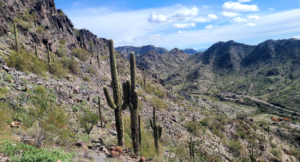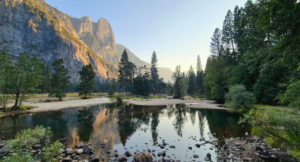Hawaiʻi Volcanoes National Park
Hawaiʻi Volcanoes National Park is located on Big Island in Hawaii. It is known for its volcanic terrain, sunrises and sunsets, stargazing, hiking and more. Hawaiʻi Volcanoes National Park has an active volcano. If you are lucky you can see actual lava flowing and even when not actively erupting you will see steam and more. Some of the highlights of this park include the Hōlei Sea Arch, Ha’akulamanu (Sulphur Banks), Chain of Craters Road, Thurston Lava Tube (Nāhuku), Puʻuloa Petroglyphs and more.
getting to Hawaiʻi Volcanoes National Park
To fly to Big Island, you will either fly into Kona International Airport (KOA) or Hilo International Airport (ITO). You can rent a car to get around the island and drive yourself to the National Park. The drive from Hawaiʻi Volcanoes National Park from Hilo is 29 miles which is about 50 minutes and from Kona is about 90 miles or about 2 hours and 5 minutes. There are day tours to Hawaiʻi Volcanoes National Park from both Kona and Hilo areas as well if you decide not to rent your own vehicle.
getting around
The best way to visit this national park is in your own private vehicle. You can drive through most of the park on paved roads. If you are flying to the area, you should rent a car. You could also join a day tour if you prefer not to drive. Most tours focus on sunrise or sunset and there are also bike tours.
where to stay
You can stay in the small village of Volcano which is just outside of the National Park. There are several types of accommodation available at various price points. We stayed at the Aloha Crater Lodge. This is ideal if you want to see lava flowing at night or to get up early for sunrise. If you are coming from the east coast, the time change is in your favor for sunrise for your first night. It definitely won’t feel as bad getting up so early.
Within the park, you can stay at one of the campgrounds. There are two drive-in campgrounds in Hawaiʻi Volcanoes National Park, Nāmakanipaio and Kulanaokuaiki. There is a maximum of a 7 night stay.
Also, there is lodging within the park at the Volcano House. This overlooks the Halemaʻumaʻu Crater. They also have dining available at The Rim at Volcano House. Advanced reservations are required.
when to visit
Hawaiʻi Volcanoes National Park can be visited year round. Some of the best months to visit are between November and March. Weather can vary day by day. We had rain and sunshine. Definitely consider going into the park before sunrise or after 9 PM. We were able to visit some of the most popular sites with ease due to getting into the park early. Also we were able to get easy parking at the popular hikes which have limited parking.
fees
Hawaiʻi Volcanoes National Park charges an entrance fee. It is $15 per person, $25 per motorcycle and $30 per vehicle.
There is also a Hawai’i Tri-Park Annual Pass for $55 that gives you entry into Hawai’i Volcanoes National Park, Haleakalā National Park, and Puʻuhonua o Hōnaunau National Historical Park.
America the Beautiful Annual Pass: $80 interagency pass good for one year from month purchased- I highly recommend this if visiting more than 3 parks in a year. You still need the reservation for sunrise even if you have this pass.
top things to do
Visit the visitor center
Hawaiʻi Volcanoes National Park has a great visitor center. Kīlauea Visitor Center is near the entrance. It is open daily 9 AM to 5 PM. Here you can get maps, ranger information and explore the bookstore.
Hiking
Hawaiʻi Volcanoes National Parkhas some great hikes including the Kīlauea Iki Hike, Hōlei Sea Arch Hike, Ha’akulamanu (Sulphur Banks), Thurston Lava Tube (Nāhuku), Devastation Trail and Puʻuloa Petroglyphs.
Sunrise/SUNSET
Going for sunrise is an unforgettable experience. You can watch the sunrise over the Halemaʻumaʻu Crater
Drive the Chain of Craters Road
Here you will get to stop along the road for some of the iconic views and hikes. The drive ends where the lava meets the ocean at the Hōlei Sea Arch.
Stargazing
You can catch incredible night sky either before sunrise, after sunset or if you spend a night camping in the park.
camping
There are two drive-in campgrounds in Hawaiʻi Volcanoes National Park, Nāmakanipaio and Kulanaokuaiki. There is a maximum of a 7 night stay.




